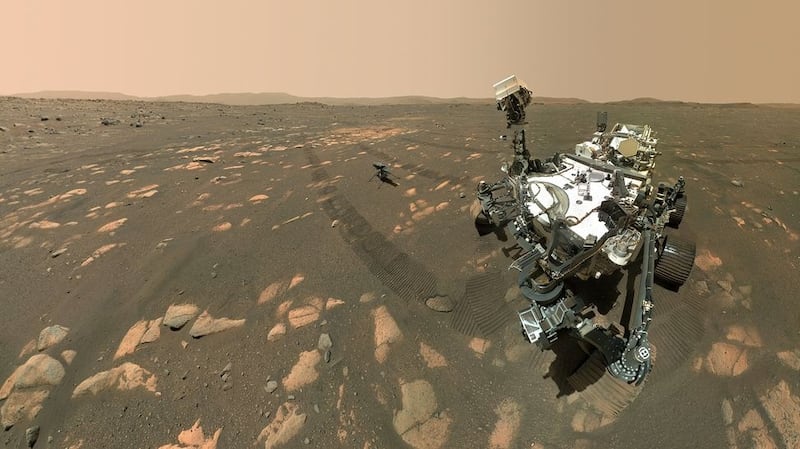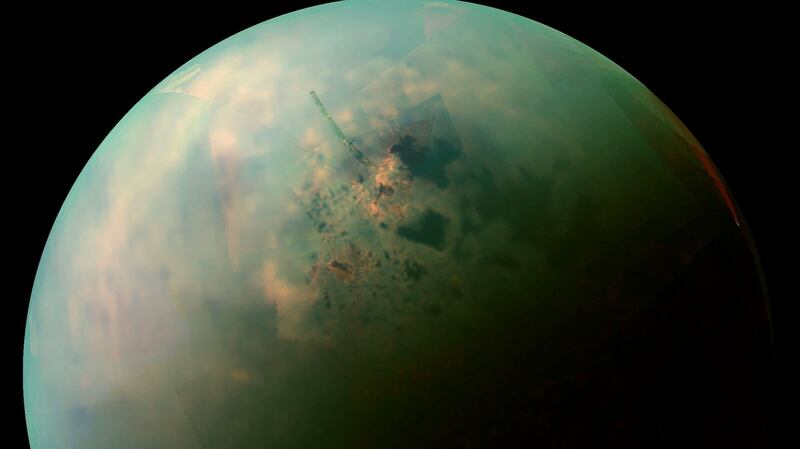A fine line exists between science fiction and predicting the future using our best current knowledge of science and technology. This is a line which Christoper E. Mason straddles in his new book, The Next 500 years – Engineering Life to Reach New Worlds, published in April.
The author proposes a 10-phase, 500-year programme, to re-engineer the human genome so humans can tolerate the extreme environments of space, with the ultimate goal of achieving human settlement on other planets, perhaps even beyond our solar system.
It certainly sounds like science fiction, but for the vast part it’s definitely not. Mason is a geneticist and computational biologist who has been a principal investigator and co-investigator on no less than seven NASA missions.
The book is ambitious and its author certainly optimistic. From gene therapies for protection against radiation in space (known to cause cancer) to exo-wombs – artificial wombs outside the human body which can protect females, and babies, from the often dangerous process of pregnancy – Mason’s vision is extraordinary.
He writes about conducting studies of genetically-modified individuals on generation ships where generations of people live and die across space. Bizarre and inspiring, these ideas certainly help us think about the future; one where multi-planetary habitation is a reality.
Why did you write this book and why now?
The book is essentially a combination of everything I've seen in the field of genetics and across science these past few decades. I think that today we're at a transition point. During the past few decades we had been missing a fundamental knowledge of genetics and exoplanets, which I call the twin engines of discovery.
On one hand we now have the the ability to sequence genomes and understand genetics. Everyone always thinks that the human genome had been mapped and completed years ago, but as I describe in the book, the process of discovering new genes is still ongoing.
The tools and technologies that let us map genomes have rapidly accelerated over the past 10 years. Then, on the other hand, over the past twenty five years, we went from knowing zero exoplanets to thousands of candidates today, and more being discovered every week. Together, this acceleration in our knowledge set the stage for the book.

What is the state-of-the-art in genome engineering today?
Most readers will have heard of Crispr at this point. It's not the first genome editing tool which was developed, but it's the one that's easiest to use. Today, you go in and edit the genome, much like you would think of opening and editing a document in a word processor. But it's not perfect yet.
The original version of Crispr had what are called off-target effects where you try to edit one location, but then you have to also deal with some other location in the genome too. But there’s a new version now called prime editing released last year, which is more accurate.
I think this is an iterative process, we’ll keep improving it. Don’t forget it’s only really been about seven or eight years since Crispr was first developed. Also, there will probably come new editing methods which replace Crispr, and I think those tools will continue to improve.
What about plans to send people to Mars in the coming decade, could genome engineering be used that soon?
Currently there are still a lot of open questions about the long term safety and efficacy of any genome engineering, whether it's in a bacteria, or in a human cell. We spent the last decade really trying to understand the human genome in great detail, including what happens to the genome in space. But I still think we probably need another two decades of some more pure fundamental discovery, before I really think it will be mature enough to deploy.
As for Mars, it just depends on how well we can protect the astronauts. I don’t think we’re even close to having lots of people going safely to Mars yet. In the book I suggest a lot of the really big trials will begin from 2040 onwards, because we’re still learning a lot today.
Every day we’re learning about new genes, and I think that will continue for a while yet. But essentially, what we really want to do is perform a multi-generational clinical trial. We would start with a handful of people and watch them and their offspring over, say, three generations.

What is the moral reasoning for doing this? What would you say to the sceptics?
I view going to other planets as a moral duty because we're the only species that has the awareness of extinction. It's just a matter of making it safe, and so I talked a great length about safety and efficacy in the book, as you do for any clinical trial, for any therapeutic.
These are questions that are still being addressed, which is also why I don’t think we’ll actually have a lot of really good answers for another 20 years. It will be a while before I would feel personally comfortable to try large scale genome editing in people.
That being said, there are already clinical trials. We’re modifying humans therapeutically using Crispr. You have to weigh up the risks of any therapy versus the suffering of people with the disease. We already have therapeutic applications of Crispr being used in people today, where we’ve decided that the risk of the therapy is worth it, because the disease is far worse. So I think at some point it will become more unethical to not provide the opportunity for people to rid themselves of some condition.
What strategies do you use to make predictions on a 500-year timescale?
Some of the things coming up ahead we already know about today. It's just putting the facts together. Take the moon Titan, for example. We already know a lot of its physical properties, so projections for its human exploration are made using that knowledge. The 500 year perspective presumes that the drive for exploration will continue. As for further ahead than that, there's an old saying, the best way to predict the future is to invent it!
Then eventually, going millions of years ahead, which I discuss in the final chapter of the book, prediction is simply driven by cosmological factors. We’ve got about a billion years until the Sun starts to boil the oceans. That’s a lot of time, sure, but it’s also a finite time. I think eventually we, as a species, need to think about space exploration not just for exploration purposes, but for survival. I think it’s sad if we die out because it would represent the loss of life as we know it, and as far as we know, the only life in the universe.

Do you consider yourself a futurist?
I actually don't know if I consider myself a futurist because I view this book very much as a series of reasonable projections. I guess that's what futurism kind of is, but I feel like as soon as you say your work is in the realm of futurism people think it's just naked speculation. That it isn't, because we're trying to seriously project forward based on things we already know.
Then again Isaac Asimov was writing about life and societies millions of years in the future. That kind of thing gives you an idea of what might be. It's one of the most unique features of humans that we have the capacity to, say, call yourself a futurist, or to think like you are in the future. It's a defining feature of our species that should be cherished and highlighted. I definitely see this kind of future thinking as being itself, quite literally, the the raw fuel of inspiration.
Dr Conor Purcell writes about science, society and culture. He can be found on twitter @ConorPPurcell – some of his other articles atcppurcell.tumblr.com














